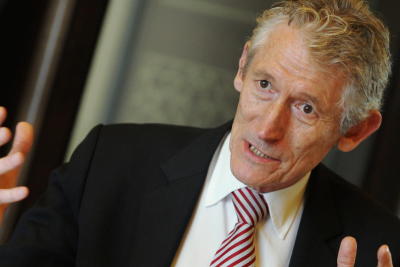Executive Chairman of cartridge franchise believes business will see growth, particularly in emerging economies.
An article on The Star sees Rod Young, Executive Chairman and Global Chief Executive of Cartridge World Inc., being interviewed on the future of the ink and toner refill retail business, which he says has much room for growth.
Despite noting that in Malaysia 80 percent of the market uses OEM cartridges and Cartridge World’s market share is just a “fraction of one percent”, Young believes that the business will do well in emerging economies and that there is growth potential. Since 2006, Cartridge World has opened eight stores in the country, with plans to open a further 15 stores by the end of the year and 32 stores within the next three to four years, focusing mainly in the Klang Valley.
“It’s been fairly modest growth in the early years in Malaysia as we have been establishing the business, changing the technology, sourcing the products and servicing the market,” said Young. “Now that we’ve proven that the business model is working we’re expanding to that targeted 32 stores.”
In the US meanwhile, Cartridge World “represents 25 percent of the market of refilling stores and still have the opportunity to grow five times there”, according to Young, who added that the franchise is hoping to have 2,500 stores by 2018.
Speaking of the business itself, Young claims that it has “helped companies save between 30 percent and 40 percent printing cost by appropriate choice of printers and cartridges”; and explained how the franchise is split into two main divisions – the retail stores that provide refilling and collection services, and more passive retailing involving advising businesses on how to save printing costs.
Young also commented on how Cartridge World is overcoming the issue of OEM chips used to link cartridges online in order to track ink usage: “Technology is always changing and the chips were designed specifically to prevents ink refilling at Cartridge World […] But we’ve developed new chipping technology and remanufactured the cartridges.”
In terms of the franchise’s workforce, Young emphasises the importance of employing “quality people who are going to be ambassadors of our brand […] We don’t want people to buy themselves a job, these are serious operations […] We are looking for motivated operators who see the opportunity this business brings to them and want to build an asset for the future or their families. It’s not our job to make them successful”.
Young went on to discuss the future of franchising, believing that there is a “strong entrepreneurial demand” globally and there will be increasing growth in franchising as people become more informed about brands and consumerism. The article also claims that “franchising is three to five times more successful than if a person went into a business on their own”; with Young noting that “the biggest brands in the world are built through franchising”.
He added: “We find that independent operators are having greater difficult to build brand with the complexity of business and media […] While branded franchise networks are attracting more potential entrepreneurs.”

